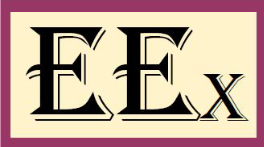New Explosive Substance – US DOT Approved Examination
Standard tests for Classification determination of a new explosive substance are:
Test Series 3(a) (ii) BAM Fallhammer Test
Tests will measure the relative sensitivities of a substance to drop-weight impact and determine if the substance is too dangerous to transport in the form tested. This test is applicable to solid and liquid substances.
Required Amount of Material: 1-2 gm
Test 3(b) (i) BAM Friction Test
Tests will measure the sensitiveness of the substance to frictional stimuli and to determine if the substance is too dangerous to transport in the form tested.
Required Amount of Material: 1-2 gm
Test 3(c) Thermal Stability Test @ 75°C
Tests will measure the stability of the substance when subjected to elevated thermal conditions to determine if the substance is too dangerous to transport. Test substance is subjected to a controlled temperature of 75°C for 48 hours.
Required Amount of Material: 100 gm
Test 3 (d) Small-scale Burning Test
Tests will determine the response of a substance to fire. The substance will be placed on a bed of kerosene-soaked sawdust or woodchips and ignited. Observations will be made to determine the response of the substance (explosion or no explosion) to the fire. Two trials are conducted with 100 grams of the substance per trial.
Required Amount of Material: 220 gm
Test Series 6(a) Single Package Test
The test determines whether the substance, as packaged, will propagate a reaction within a package and if so, to what degree.
A package as it will be offered in transportation is placed on a steel witness plate and confined using sand or inert packages. One inner package is used as a donor and is made to react. Results are evaluated based on the severity of the reaction and the extent to which the contents of the package are involved.
Required Amount of Material: 3 packages
Test Series 6(b) Stack Test
The test determines whether the substance, as packaged, will propagate a reaction from one package to another and if so, to what degree. This test is performed on packaged materials that fail the single package test or are shipped with only one article per outer package or without packaging.
A stack of five (5) or more packages of the substance as it will be offered in transportation is placed on a steel witness plate. One package is the donor. Additional confinement is provided to simulate a full stack. The donor is made to react. Results are evaluated based on the severity of the reaction and whether the acceptor packages are involved.
Required Amount of Material: Sufficient packages to provide a stack at least 0.15m3 or a minimum of 5 packages.
Test Series 6(c) External Fire (Bonfire) Test
The test determines whether packages of an explosive substance, will exhibit mass explosion, dangerous projections, excessive radiant heat, violent burning or any other dangerous effect when involved in an engulfing fire.
The set of packages will be held on a grated platform with wood, liquid fuel or gas provided sufficient to result in an intense, engulfing fire. The event is observed and monitored via video cameras, heat flux sensors, witness panels or other means as appropriate, for evidence of detonation, explosion, potentially hazardous projection, intensive fireball, etc. Required amount: Sufficient packages to give a total volume of not less than 0.15 m3, with a standard minimum of three packages.
